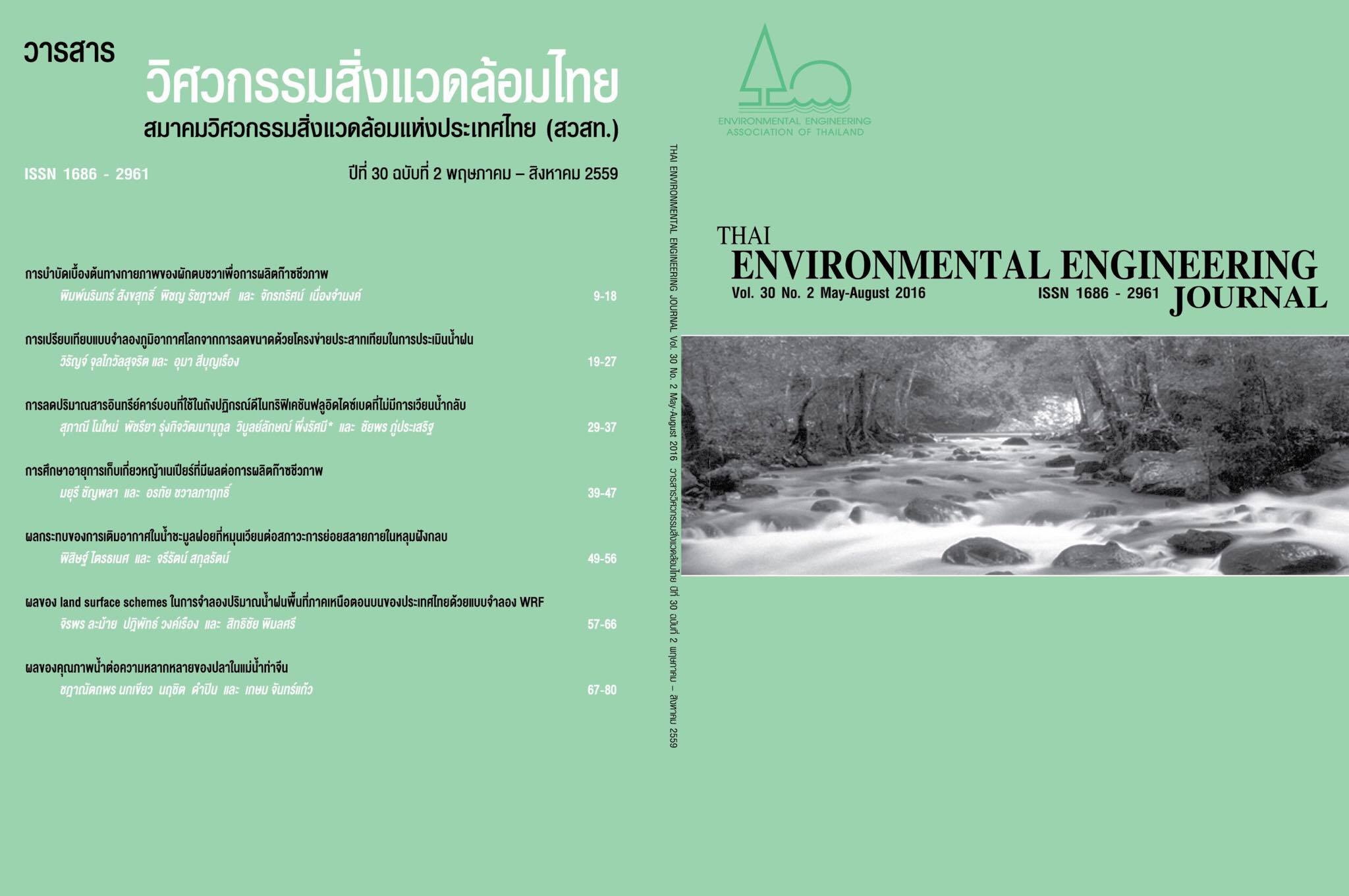Effect of Aerated Leachate Recirculation on Decomposition Condition in Municipal Solid Waste (MSW) Landfill
Main Article Content
Abstract
The aim of this research is to study a method to enhance aerobic condition in MSW landfill by aerating leachate recirculated. Two reactors with a length of 0.40 m width of 0.40 m and height 1.20 m were used. Synthesis MSW consisted of food waste, plastic and paper with 250 kg/m3density were used in the two reactors. Dissolve oxygen and COD reduced of effluent leachate were measured and compared. Leachate of the first reactor was recirculated and aerated when COD dropped below 2500 mg/L (as in old landfill) while leachate of the second reactor was recirculated and aerated from the beginning (as in new landfill). The result showed that the aeration of recirculated leachate from the beginning can increase aerobic condition in the system as dissolved oxygen in recirculated leachate was increased and the difference between dissolved oxygen of influent and effluent recirculated leachate was clearly observed. These demonstrated the activity of aerobic microbial and related to the increase of nitrate in the system. In addition, it can be seen that organic (in terms of COD) treatment efficiency when recirculated leachate was aerated from the beginning was higher than aerated when COD dropped below 2500 mg/L (94% and 71% respectively)
Article Details
References
[2] PCD: Pollution Control Department 2012. Manual for Local Authorities: Municipal solid waste management. (in Thai).
[3] Pohland, F.G. 1980. Leachate recycle as landfill management option. J. Envi. Eng. Div. 106: 1057-1069.
[4] Tittlebaum, M.E. 1982. Organic carbon content stabilization through landfill Leachate recirculation. J. WPCF. 54: 428-433.
[5] Nguyen Nhu Sang, Satoshi Soda, Tomonori Ishigaki and Michihiko Ike. 2012. Microorganisms in landfill bioreactors for accelerated stabilization of solid wastes. J. Biosci. Bioeng. 114: 243-250.
[6] M. Sinan Bilgili, Ahmet Demir and Bestamin Ozkaya. 2007. Influence of Leachate recirculation on aerobic and anaerobic decomposition of solid wastes. J. Hazard. Mater. 143: 177-183.
[7] A. Suna Erses, Turgut T. Onay and Orhan Yenigun. 2008. Comparison of aerobic and anaerobic degradation of municipal solid waste in bioreactor landfills. Bioresource Technol. 99: 5418-5426.
[8] Sawangpanyangkura, T. 2002. How Sanitary Landfill should be?: Part 2. Maejo Vision. 2: 19.
[9] Chuanfu Wu, Takayuki Shimaoka, Hirofumi Nakayama, Teppei Komiya, Xiaoli Chai and Yongxia Hao. 2014. Influence of aeration modes on leachate characteristic of landfills that adopt the aerobic–anaerobic landfill method. Waste Manage. 34 : 101-111.
[10] Dong Jun, Zhao Yongsheng, Rotich K. Henry and Hong Mei. 2007. Impacts of aeration and active sludge addition on leachate recirculation bioreactor. J. Hazard. Mater. 147: 240-248.


